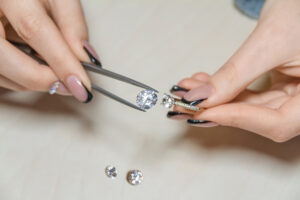
For engagement rings and other jewelry purchases, lab-grown diamonds are becoming increasingly popular. You should, however, always know what you’re getting before making a purchase. Many people these days prefer lab-grown diamonds because they are less expensive than naturally occurring diamonds. Before you plan to buy a lab-grown earring or necklace, you should try to learn more about them.
In this article, we will take a look at some of the frequently asked questions about lab-grown diamonds.
Are Lab-Grown Diamonds Real?
Lab-grown diamonds are chemically, physically, and visually similar to real diamonds. They’re genuine diamonds, with the very same crystal structure and lovely gleam as true diamonds.
How To Tell The Difference Between Natural Diamond And Lab-Grown Diamond?
It’s impossible to tell the difference between a lab-grown diamond and a natural one at first glance. However, there are two minor details to keep an eye out for. Try to detect a tiny laser inscription on the girdle — the biggest area of the diamond that determines its contour when viewed from the top — with a magnifying glass. An inscription on many lab-created diamonds identifies them as such.
A lab report number can also be engraved on the girdle of a diamond. If you go to the laboratory’s website and enter this number, you’ll be able to acquire a report that will tell you whether the stone was mined or developed in a lab, as well as a lot of other information. Only a renowned gemological laboratory can tell you whether a diamond is mined or produced if there is nothing on the girdle.
Do Lab-Grown Diamonds Pass A Diamond Tester Exam?
The thermal and electrical conductivity of lab-grown diamonds is identical to that of mined diamonds. As a result, they’ll pass the diamond tester exam.
How Are Lab-Grown Diamonds Made?
HPHT and CVD are two methods that can produce jewelry-quality diamonds. HPHT is an

acronym meaning High Pressure/High Temperature. This method is similar to how diamonds form in nature, which involves heating carbon to high degrees and squeezing it together. This time-consuming process necessitates a significant amount of energy.
Chemical Vapor Deposition, or CVD, is the method in which a combination of hydrogen and methane gas is introduced in a chamber with a seed crystal. Microwave power often raises the temperature of the chamber to a high level, which excites the gas. On the seed crystal, the diamond grows.